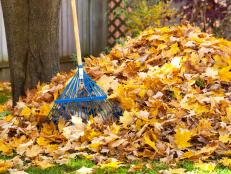Flannel Moth Caterpillar

Part of its coat includes stinging, or urticating, hairs. Like other stinging caterpillars, the flannel moth caterpillar doesn't sting in the sense that bees and wasps do, but their hairs are connected with glands that contain toxins. There are several types of stinging caterpillars, and their degree of toxicity varies. For some people, the flannel moth caterpillar causes only intense itching or burning; others experience an allergic reaction and need to seek medical attention. In other words, photograph these critters all you want but don't touch!
Horticulturally speaking, the flannel moth caterpillar is not as much of a problem. It feeds on the leaves of oaks, redbuds, maples, hibiscus, and other deciduous trees and shrubs but usually isn't considered a serious pest.
"You normally see just one or two at a time, and the extent of the damage is not usually noticed since it's high up in the trees," says Wendy Wilber, environmental horticultural extension agent for Alachua County, Florida.













































